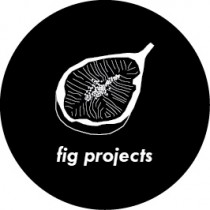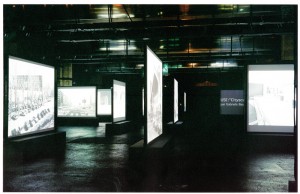Multiplicity. First version of the Uncertain States of Europe research project.
The exhibition at arc en rêve centre d’architecture in Bordeaux, in the fall of 2000, was the first installment of the research about the uncertain conditions of European territories and initiated the activities of the collective multiplicity, of which Francisca Insulza was a founding member.
Below the official press release of the Mutations exhibition.
More than 50% of the world’s population lives today in urban areas. Projections show the city’s population rising to five billion in 25 years time. The world is turning into a giant city. At the same time the global economy is abolishing frontiers and new communication networks are opening up a space of unlimited interconnections, so that, from Mexico to São Paolo, from Berlin to Bombay, and from Bangkok to Los Angeles, cities are becoming the world.
These unprecedented mutations in the history of mankind mark the emergence of a new urban civilization. The latter is producing new disparities, new forms of insecurity, conflicts and crises, but also new hopes; hopes that all these new developments will become the leaven of reform in politics based on new forms of solidarity, a return to utopian aspirations, and with it the ability to conceive of our world and construct it in order to counter the trend toward standardization, leveling down and poverty.
Organized by arc en rêve centre d’architecture from November 2000 to March 2001, MUTATIONS will be exploring international research on the contemporary urban condition and future prospects through a program of events, at the center of which is an exhibition at the Entrepôt.
The exhibition will be informed by Rem Koolhaas’ recent work on the urban condition conducted as part of the Harvard University Project on the City. Over the past few years, the Dutch architect and theorist has focused with his students on three research projects that have led to rethinking the very concept of the city; they have studied and analyzed the shopping phenomenon and the rising hold of commerce on the public sphere, the sudden emergence of Asian cities in the Pearl River Delta and the extreme case of Lagos in Nigeria.
Among the numerous other participants at the event, American philosopher Sanford Kwinter will be presenting a critical essay on the last stage in the modernization of the American city, with Houston serving as a case study; Italian architect Stefano Boeri will be exploring the distinctive characteristics of European cities; and Céline Rozenblat will be examining statistics that reveal much about the short- and long-term mutations in the world.
These issues and others will be echoed in works by artists selected by Hans Ulrich Obrist. The exhibition design by French architect Jean Nouvel will take visitors on a trip through the changing world of cities. It will be held in the central nave of the Entrepôt and the side galleries around it.
2,500 square meters of exhibition space, 10 movies on 10 cities, commissioned works by young photographers, a book, a journal, conferences, seminars, screenings, workshops for young publics, and festive events (music, dance, video) are all part of a program schedule aimed at opening the debate on the urban condition and promoting public awareness of the complex issues involved in the great mutations of our days.
In the ambit of this big exhibition, will open ”USE – Uncertain States of Europe”, Almost 70 architects, photographers, filmmakers, artists, geographers of the ‘Multiplicity’ group, co-ordinated by the Milan-based architect Stefano Boeri, have tried researching -as ‘detective of space’- some transformation processes of the European territory and of its cities, from Pristina to Paris, from Helsinki to Porto. These are unusual and almost unknown processes and phenomena, also because external to the debate on architecture and urbanism, yet of great power, able to radically change the nature of the principal European cities.
Instead of observing big architectural projects or public intervention plans, USE proposes an image of Europe as a cultural device always in movement, that in these years is experimenting new bottom-up aggregation forms and novel social landscapes.
It is in these sites, at the periphery of the geopolitical imaginary produced in Brussels and in Strasbourg, that Europe is changing most rapidly.
It is here that innovations emerge and it is possible to imagine the future of our continent.
The case studies included in Uncertain States of Europe were:
USE.01 Belgrade
Ana Dzokic, Milica Topalovic, Ivan Kucina, Milan Djura, Marc Neelen
Gray Realm / Wild City
USE.02 Paris
Yves Dubalin, Panos Mantziaras, Jean-Louis Violeau
Subversions and Diversions: The “Italie” Slab in the 13th Arrondissement of Paris
USE.03 Mazara del Vallo
Franco La Cecla, Stefano Savona, Ilaria Sposito
A Mirror-Border
USE.04 Raves
Paolo Vari
Rave Parties: Nomadic Flames
USE.05 Benelux
Carole Schmit
Transnational Opportunism
USE.06 RFA-RDA
Carole Ducoli, Maki Gherzi, Stefano Giussani, Valentina Gugole, Lorenzo Laura, Silvia Lupi, Pier Paolo Tamburelli
Automatic Engineering
USE.07 Elche
Francisca Insulza
Invisible Factories
USE.08 Pristina
Giulio Padovani, Alessandro Floris, Andrea Soffientino, Daniela Borroni, Rosafa Basha
Parallel lives
USE.09 Alps
John Palmesino
Naturality
USE.10 Tyneside
John Lonsdale
Shifting Margins
USE.11 San Marino
Guido Musante, Gianandrea Barreca
From the Historic Centre to the Shopping Mall and Back
USE.12 Helsinki
John Palmesino
Auticatalytic Growth
USE.13 Bucharest
Giovanni La Varra, Doron Steinberg
A City Entered One by One
USE.14 Brianza
Arturo Lanzani
Family Production
USE.15 Zurich
Mirko Zardini
Glattalstadt, a Neonatural City
USE.16 Porto
Carlos Carvalho
The Kingdom of Large-Scale Commercial Malls
USE.17 Moscow
Bart Goldhorn
Dachaland: From Dacha to Cottage
USE.18 Cote d’Azur
Elena Rosa
A Material/Mental Itinerary
USE.19 North Brabant
Bas Princen
Temporary Sceneries: Appropriated Leisure Territories
USE.20 Athens
Yannis Aesopos, Yorgos Simeoforidis / Photos: Panos Kokkinias
Paralogical Urbanization
USE.21 Amsterdam
Jan Kapsenberg
Erotic Maeuvers and Territories of Desire
USE.22 Santiago de Compostela
Multiplicity
The City and Its Double
USE.23 Rumania
Multiplicity
Agricultural Intensification – Imported Specialization
USE.24 Belice Valley
Roberto Collovà
The Three cities
USE.25 Port of Valencia
Multiplicity
Docks in the City


